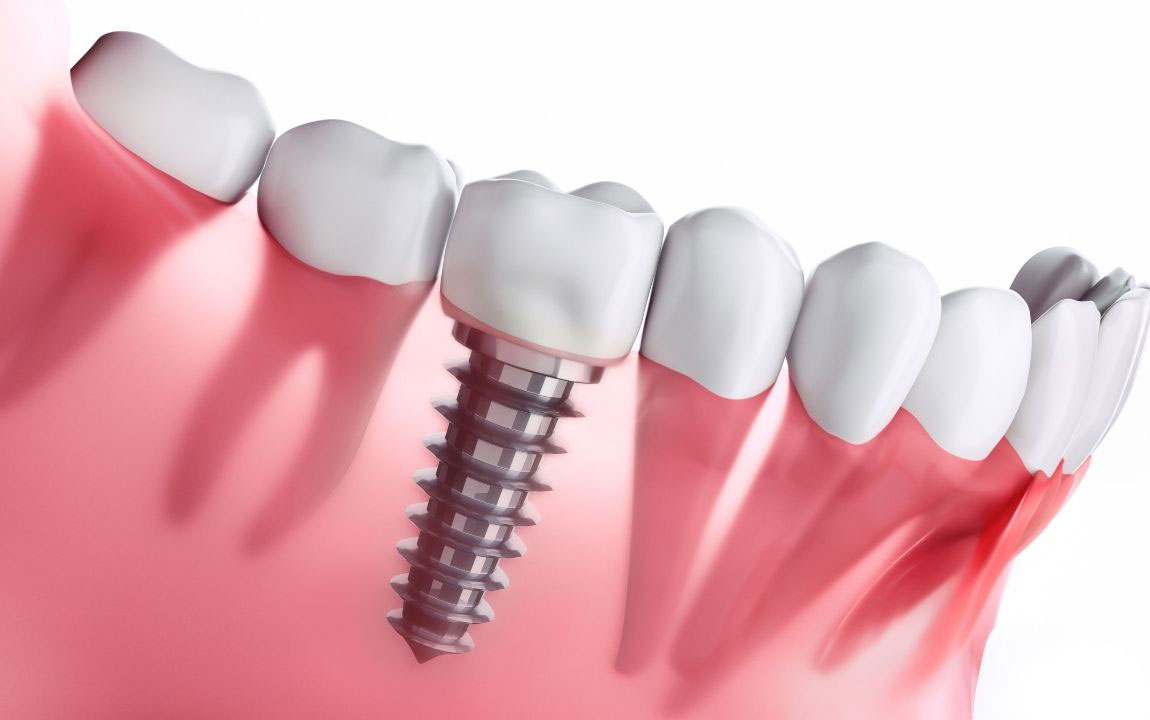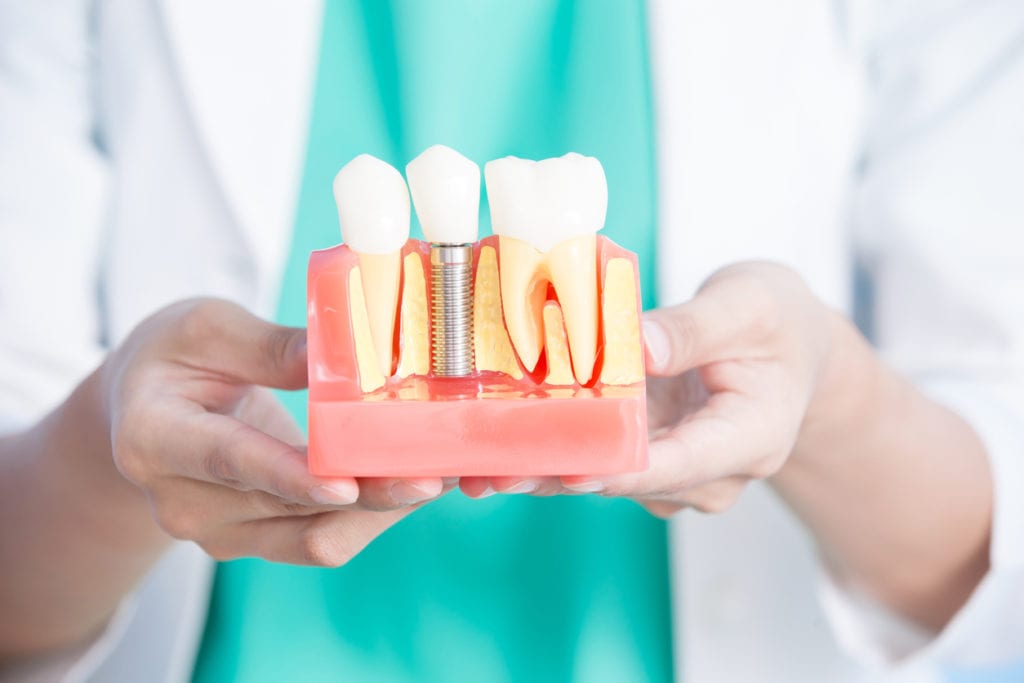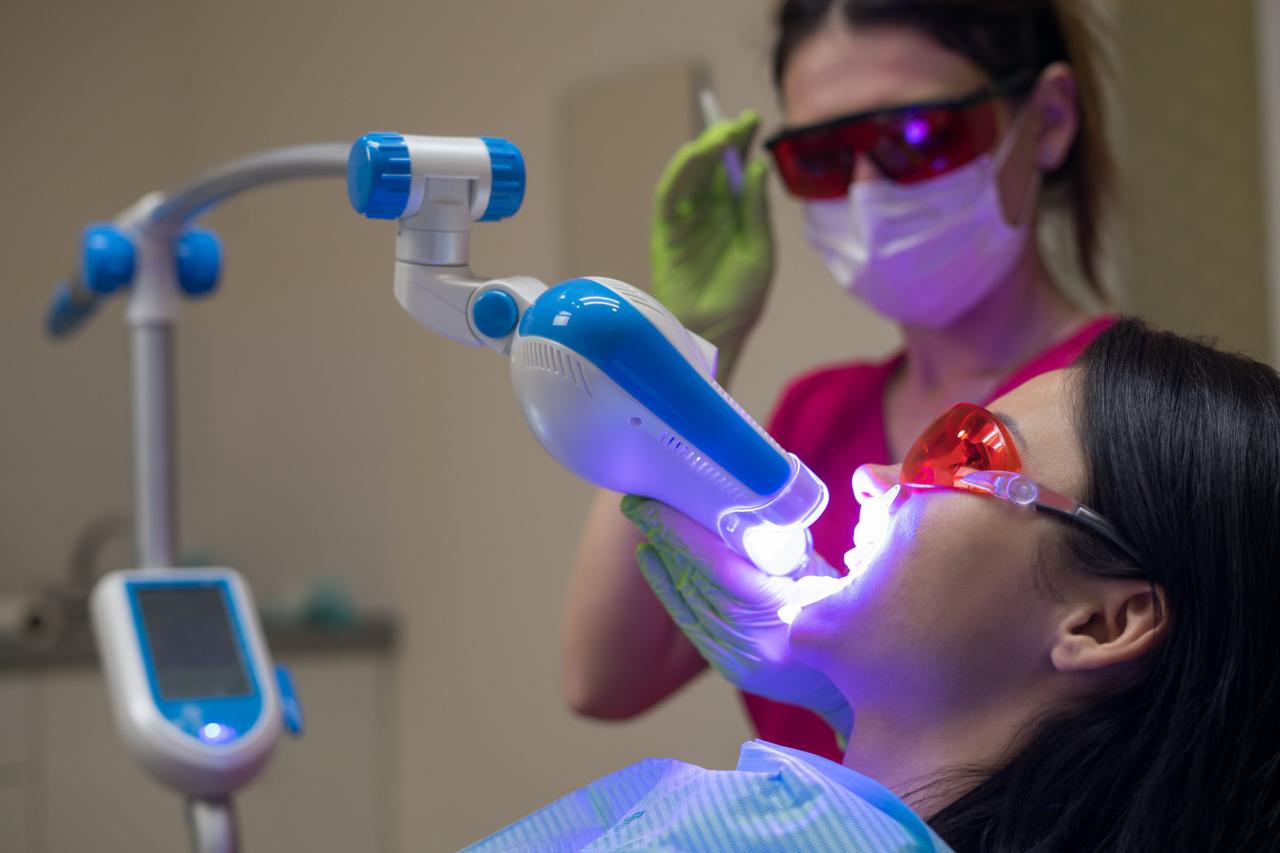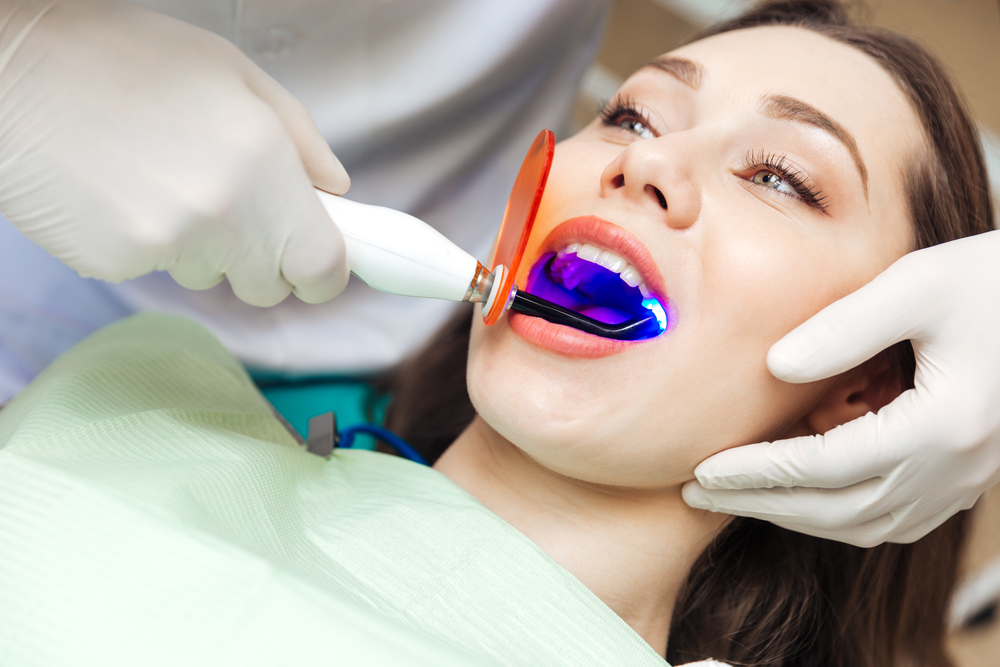Newest Dental Implant Technology: Revolutionizing Oral Health
Newest dental implant technology has revolutionized oral health, offering patients innovative solutions for tooth loss. From 3D printing to guided implant surgery, these advancements have significantly improved implant placement, integration, […]

Newest dental implant technology has revolutionized oral health, offering patients innovative solutions for tooth loss. From 3D printing to guided implant surgery, these advancements have significantly improved implant placement, integration, and overall success rates. The field is constantly evolving, with new materials and techniques emerging, promising even greater benefits in the future.
Dental implants have become a popular and effective option for replacing missing teeth, offering a natural-looking and functional solution. Compared to traditional methods like dentures or bridges, implants provide a more permanent and stable solution, allowing patients to enjoy a full range of chewing functions and a confident smile.
Introduction to Dental Implants
Dental implants have revolutionized tooth replacement, offering a durable and natural-looking solution for individuals missing teeth. These artificial tooth roots are surgically placed into the jawbone, providing a stable foundation for crowns, bridges, or dentures. The evolution of dental implants has been marked by significant advancements in materials, techniques, and technology, resulting in improved outcomes and increased patient satisfaction.
Evolution of Dental Implants
The concept of dental implants dates back centuries, with early attempts using materials like ivory and bone. However, the modern era of dental implants began in the 1960s with the pioneering work of Swedish orthopedic surgeon Per-Ingvar Brånemark. He discovered that titanium, a biocompatible metal, could osseointegrate with bone, meaning it could fuse directly to the jawbone. This breakthrough paved the way for the development of the first successful dental implants.
Since then, dental implant technology has advanced significantly. Early implants were often bulky and required extensive surgical procedures. Today, implants are smaller, more refined, and can be placed with minimally invasive techniques. The development of computer-aided design and manufacturing (CAD/CAM) has also revolutionized implant placement, allowing for greater precision and predictability.
- 1960s: Per-Ingvar Brånemark discovers the osseointegration of titanium with bone, leading to the development of the first successful dental implants.
- 1980s: The introduction of endosseous implants, which are surgically placed into the jawbone, revolutionizes the field of dental implants.
- 1990s: Advancements in surface treatments and implant designs lead to improved osseointegration rates and reduced implant failure.
- 2000s: The development of CAD/CAM technology enables more precise implant placement and faster recovery times.
- Present: Continued research and development are focused on improving implant materials, surgical techniques, and prosthetic options, leading to even better outcomes for patients.
Advantages of Dental Implants
Dental implants offer numerous advantages over traditional tooth replacement methods, such as dentures and bridges. These benefits include:
- Improved Aesthetics: Dental implants provide a natural-looking and aesthetically pleasing solution for missing teeth. They are designed to mimic the appearance and function of natural teeth, restoring your smile and confidence.
- Enhanced Function: Implants provide a stable foundation for crowns, bridges, or dentures, allowing you to eat, speak, and laugh with confidence. They also help prevent bone loss, which can occur with other tooth replacement options.
- Durability and Longevity: Dental implants are extremely durable and can last for many years with proper care. With good oral hygiene and regular dental checkups, implants can provide a long-lasting solution for missing teeth.
- Improved Oral Health: Unlike dentures, implants do not require the use of adhesives or special cleaning solutions. They are also more comfortable and secure, making them easier to maintain. Moreover, implants help preserve the surrounding bone, which is essential for overall oral health.
Types of Dental Implants
Dental implants are artificial tooth roots that are surgically placed into the jawbone. They provide a stable foundation for replacement teeth, which can be crowns, bridges, or dentures. There are several different types of dental implants, each with its own unique characteristics and applications.
Traditional Implants
Traditional implants are the most common type of dental implant. They are made of titanium, a biocompatible metal that fuses with the bone over time. Traditional implants are typically cylindrical in shape and have a threaded design to help them integrate with the bone. They are used to replace single teeth, multiple teeth, or an entire arch of teeth.
Mini Implants
Mini implants are smaller than traditional implants and are often used to support dentures or bridges. They are typically made of titanium or a titanium alloy and have a narrower diameter than traditional implants. Mini implants are often used in patients who have limited bone density or who do not want to undergo a lengthy surgical procedure.
Immediate Load Implants
Immediate load implants are placed and loaded with a crown or bridge immediately after the implant is placed. This type of implant is often used in patients who are missing a single tooth and want to have their replacement tooth placed as soon as possible.
Osseointegrated Implants
Osseointegration is the process by which a dental implant fuses with the surrounding bone. This process is essential for the long-term success of dental implants. Osseointegrated implants are the most common type of implant used today and are considered to be the gold standard in dental implant technology.
Subperiosteal Implants
Subperiosteal implants are placed on top of the jawbone, under the gum tissue. They are often used in patients who have limited bone density or who are not suitable for traditional implants. Subperiosteal implants are typically made of titanium or a titanium alloy and have a framework that supports a denture or bridge.
Comparison of Dental Implant Types
| Implant Type | Pros | Cons |
|---|---|---|
| Traditional Implants |
|
|
| Mini Implants |
|
|
| Immediate Load Implants |
|
|
| Osseointegrated Implants |
|
|
| Subperiosteal Implants |
|
|
Advancements in Dental Implant Technology: Newest Dental Implant Technology
Dental implant technology has undergone significant advancements, leading to more precise, efficient, and patient-friendly procedures. These advancements have improved implant success rates, reduced recovery time, and enhanced the overall implant experience.
3D Printing in Implant Fabrication
3D printing, also known as additive manufacturing, has revolutionized implant fabrication by enabling the creation of highly customized implants.
- Improved Fit and Accuracy: 3D printing allows for the creation of implants that perfectly match the patient’s unique anatomy, ensuring a precise fit and minimizing the risk of complications.
- Enhanced Aesthetics: 3D printing allows for the creation of implants with intricate designs that mimic the natural appearance of teeth, resulting in more aesthetically pleasing results.
- Reduced Surgical Time: 3D printed implants can be pre-shaped to the patient’s anatomy, reducing the time required for surgery and minimizing tissue trauma.
- Reduced Cost: 3D printing can be more cost-effective than traditional implant fabrication methods, particularly for complex cases requiring custom implants.
Guided Implant Surgery
Guided implant surgery is a minimally invasive technique that utilizes a surgical guide created from a 3D scan of the patient’s jawbone.
- Increased Accuracy and Precision: The surgical guide acts as a template, ensuring that the implant is placed in the correct position with minimal deviation.
- Reduced Surgical Time: Guided implant surgery is often quicker than traditional surgery, as the surgeon has a clear roadmap for implant placement.
- Minimized Tissue Trauma: The precise nature of guided implant surgery reduces the need for extensive tissue manipulation, resulting in less discomfort and faster healing.
- Reduced Risk of Complications: Guided implant surgery minimizes the risk of nerve damage, sinus perforation, and other complications that can occur with traditional surgery.
Digital Implant Planning Software
Digital implant planning software allows dentists to create virtual 3D models of the patient’s mouth and plan the implant placement procedure in detail.
- Improved Treatment Planning: The software allows dentists to assess the patient’s bone density, tooth alignment, and other factors that may influence implant placement.
- Enhanced Communication with Patients: Dentists can use the software to show patients a virtual representation of their implant treatment plan, making it easier to understand the procedure and discuss expectations.
- Reduced Surgical Time: Digital implant planning software helps to streamline the surgical process, reducing the time required for surgery.
- Increased Success Rates: By optimizing implant placement, digital implant planning software can contribute to higher implant success rates.
Bone Grafting Techniques, Newest dental implant technology
Bone grafting is a procedure used to augment the jawbone in cases where there is insufficient bone to support an implant.
- Improved Implant Stability: Bone grafting provides a solid foundation for the implant, increasing its stability and reducing the risk of failure.
- Enhanced Aesthetics: Bone grafting can help to restore the lost volume of the jawbone, improving the overall appearance of the face.
- Improved Function: Bone grafting can improve the function of the jawbone, allowing patients to chew and speak more comfortably.
Implant Surface Modifications
Implant surface modifications are designed to enhance the integration of the implant with the surrounding bone tissue.
- Improved Osseointegration: Surface modifications can promote bone growth around the implant, leading to faster and more secure integration.
- Reduced Risk of Infection: Certain surface modifications can reduce the risk of bacterial infection around the implant.
- Enhanced Durability: Some surface modifications can improve the implant’s resistance to wear and tear, extending its lifespan.
Innovative Implant Materials
The field of dental implants has witnessed significant advancements in material science, leading to the development of innovative materials with enhanced properties and improved biocompatibility. These advancements have contributed to increased implant longevity, reduced complications, and improved patient outcomes.
Zirconia Implants
Zirconia, also known as zirconium dioxide, is a highly biocompatible ceramic material that has gained popularity in dental implantology. Zirconia implants offer several advantages over traditional titanium implants, including:
- Excellent Biocompatibility: Zirconia exhibits excellent biocompatibility, meaning it is well-tolerated by the human body and does not trigger an immune response. This property minimizes the risk of rejection and promotes osseointegration, the process by which the implant integrates with the surrounding bone.
- High Strength and Durability: Zirconia is known for its exceptional strength and durability, making it resistant to fracture and wear. This ensures the implant can withstand the forces of chewing and biting, providing long-lasting stability.
- Aesthetic Appeal: Zirconia implants are aesthetically pleasing due to their natural white color, which closely resembles the color of natural teeth. This makes them particularly suitable for implants in the visible areas of the mouth.
- Antibacterial Properties: Some studies suggest that zirconia may possess antibacterial properties, which can help prevent infection around the implant site.
Titanium Alloys
Titanium and its alloys have been the mainstay of dental implants for decades due to their excellent properties. Titanium alloys offer a combination of strength, biocompatibility, and corrosion resistance.
- Exceptional Biocompatibility: Titanium is highly biocompatible and readily integrates with bone tissue, promoting osseointegration. This makes titanium implants a reliable and predictable option for dental restoration.
- High Strength-to-Weight Ratio: Titanium alloys exhibit a high strength-to-weight ratio, meaning they are strong and durable despite their lightweight nature. This allows for the use of smaller and less invasive implants.
- Excellent Corrosion Resistance: Titanium is highly resistant to corrosion, even in the harsh oral environment. This ensures the implant remains stable and functional over time.
Biocompatible Ceramics
Biocompatible ceramics, such as hydroxyapatite (HA) and bioactive glass, are increasingly used in dental implants to enhance osseointegration and promote bone regeneration. These materials mimic the composition of natural bone, providing a favorable surface for bone cells to attach and grow.
- Enhanced Osseointegration: Biocompatible ceramics provide a surface that encourages bone cells to adhere and grow, promoting rapid and strong osseointegration. This leads to improved implant stability and longevity.
- Bone Regeneration: Bioactive ceramics can stimulate bone regeneration around the implant site, filling any gaps or defects in the bone. This is particularly beneficial in cases where bone loss has occurred.
- Bioactivity: Bioactive ceramics interact with the surrounding bone tissue, promoting a chemical bond that strengthens the implant-bone interface.
Composite Materials
Composite materials combine the properties of different materials to create implants with enhanced performance. For example, combining titanium with biocompatible ceramics can create implants that offer both strength and improved osseointegration.
- Tailored Properties: Composite materials allow for the customization of implant properties to meet specific patient needs. For instance, combining a strong titanium core with a bioceramic coating can provide both structural support and enhanced bone bonding.
- Synergistic Effects: The combination of different materials can create synergistic effects, leading to improved implant performance beyond what each individual material could achieve on its own.
- Future Potential: Research continues to explore new composite materials and their applications in dental implantology, holding promise for even more advanced and personalized implants in the future.
Implant Placement and Integration

The placement of dental implants is a meticulous surgical procedure that requires careful planning and execution. It involves creating a precise space within the jawbone to accommodate the implant, ensuring proper alignment and stability. The latest advancements in dental implant technology have significantly enhanced the precision and efficiency of this process.
The integration of a dental implant with the surrounding bone tissue, known as osseointegration, is crucial for the long-term success of the implant. This process involves the direct bonding of the implant surface to the living bone, creating a strong and stable foundation for the artificial tooth.
Osseointegration
Osseointegration is a remarkable biological process that forms the cornerstone of dental implant success. It involves the direct bonding of the implant surface to the living bone, creating a strong and stable foundation for the artificial tooth. This process is facilitated by the implant’s biocompatible surface, which encourages the growth of new bone cells around the implant.
The process of osseointegration typically takes several months to complete, during which time the implant gradually fuses with the surrounding bone. Once osseointegration is achieved, the implant becomes a permanent part of the jawbone, providing a secure and durable base for the artificial tooth.
Implant Placement Procedure
The implant placement procedure is typically performed under local anesthesia, ensuring patient comfort. The dentist first prepares the implant site by carefully drilling a small hole into the jawbone. The implant, which is a small titanium screw, is then carefully inserted into the prepared space.
The implant is positioned precisely to ensure proper alignment and stability, and the surrounding tissue is carefully closed. The healing process typically takes several months, during which time the implant integrates with the surrounding bone.
The latest advancements in implant placement techniques, such as guided surgery and computer-aided design/computer-aided manufacturing (CAD/CAM) technology, have significantly enhanced the precision and predictability of the procedure.
Factors Affecting Osseointegration
Several factors can influence the success of osseointegration, including:
- Bone Quality and Quantity: Adequate bone density and volume are essential for successful osseointegration. If the bone is too thin or soft, bone grafting procedures may be necessary to enhance the implant site.
- Implant Surface Characteristics: The surface of the implant plays a crucial role in osseointegration. Implants with a roughened surface encourage bone growth and promote faster integration.
- Surgical Technique: Precise implant placement and meticulous surgical technique are essential for optimal osseointegration. Minimally invasive techniques and advanced surgical instruments can help minimize trauma to the surrounding tissue and promote healing.
- Patient Health: Overall patient health, including smoking status, diabetes, and other medical conditions, can influence the success of osseointegration. It’s important for patients to maintain good oral hygiene and follow their dentist’s instructions carefully.
Implant Restorations

Once the dental implant has successfully integrated with the jawbone, the next step is to restore the missing tooth or teeth. This involves attaching a restoration to the implant, which can be a crown, bridge, denture, or overdenture.
The choice of restoration depends on several factors, including the number of missing teeth, the location of the missing teeth, the patient’s oral health, and their aesthetic preferences. Each type of restoration has its own advantages and disadvantages, which will be discussed in detail below.
Crowns
A crown is a tooth-shaped cap that is placed over a dental implant to restore the shape, size, and function of a missing tooth. Crowns are typically made of porcelain, ceramic, or metal. Porcelain crowns are known for their natural appearance and durability, while ceramic crowns are also aesthetically pleasing and offer good strength. Metal crowns are the most durable option but may not be as aesthetically appealing.
Crowns offer several advantages, including:
- Improved aesthetics: Crowns can restore the natural appearance of a missing tooth, improving a patient’s smile.
- Enhanced function: Crowns allow patients to chew and speak properly.
- Durability: Crowns are designed to last for many years with proper care.
However, crowns also have some disadvantages, such as:
- Cost: Crowns can be expensive, especially if made of porcelain or ceramic.
- Potential for damage: Crowns can chip or crack if subjected to excessive force.
- Irritation: Some patients may experience irritation or sensitivity around the crown.
Bridges
A bridge is a dental restoration that replaces one or more missing teeth. It consists of two or more crowns that are attached to abutment teeth on either side of the gap, with a pontic (artificial tooth) in between. Bridges can be made of porcelain, ceramic, or metal. Porcelain bridges offer a natural appearance, while ceramic bridges are also aesthetically pleasing and offer good strength. Metal bridges are the most durable option but may not be as aesthetically appealing.
Bridges offer several advantages, including:
- Improved aesthetics: Bridges can restore the natural appearance of missing teeth, improving a patient’s smile.
- Enhanced function: Bridges allow patients to chew and speak properly.
- Durability: Bridges are designed to last for many years with proper care.
However, bridges also have some disadvantages, such as:
- Cost: Bridges can be expensive, especially if made of porcelain or ceramic.
- Potential for damage: Bridges can chip or crack if subjected to excessive force.
- Irritation: Some patients may experience irritation or sensitivity around the bridge.
- Damage to abutment teeth: The abutment teeth that support the bridge may be weakened or damaged over time.
Dentures
Dentures are removable appliances that replace missing teeth. They are typically made of acrylic or nylon, and can be either full or partial. Full dentures replace all of the teeth in an arch, while partial dentures replace only some of the teeth. Dentures are typically held in place by suction, but some may require the use of adhesives.
The newest dental implant technology is constantly evolving, with advancements in materials and procedures leading to better outcomes. Similar to the way refrigeration and air conditioning technology edition 8 has revolutionized the way we stay comfortable, these dental innovations aim to make implants more comfortable, durable, and accessible.
This field is seeing a rapid increase in research and development, promising even more breakthroughs in the future.
Dentures offer several advantages, including:
- Cost-effective: Dentures are typically less expensive than other types of dental restorations.
- Removable: Dentures can be removed for cleaning and maintenance.
- Improved aesthetics: Dentures can restore the appearance of missing teeth.
However, dentures also have some disadvantages, such as:
- Unstable: Dentures can become loose or unstable over time.
- Limited chewing ability: Dentures may not provide the same chewing ability as natural teeth.
- Uncomfortable: Dentures can be uncomfortable, especially for new wearers.
- Aesthetic concerns: Dentures may not look as natural as other types of dental restorations.
Overdentures
Overdentures are dentures that are supported by dental implants. They are typically used for patients who have lost all of their teeth in an arch. Overdentures are more stable than traditional dentures and offer better chewing ability.
Overdentures offer several advantages, including:
- Improved stability: Overdentures are more stable than traditional dentures, making them easier to wear and use.
- Enhanced chewing ability: Overdentures allow patients to chew more effectively than traditional dentures.
- Preservation of jawbone: Overdentures help to preserve the jawbone, which can deteriorate over time without teeth.
However, overdentures also have some disadvantages, such as:
- Cost: Overdentures are more expensive than traditional dentures.
- Surgical procedure: Overdentures require a surgical procedure to place the implants.
- Potential for complications: As with any surgical procedure, there is a risk of complications with implant placement.
Future Trends in Dental Implant Technology

The field of dental implant technology is constantly evolving, driven by advancements in materials science, robotics, and bioengineering. These innovations promise to make dental implants even more effective, durable, and personalized in the future.
Development of Biocompatible Materials
The development of biocompatible materials is a crucial area of research in dental implant technology. These materials are designed to be well-tolerated by the body, minimizing the risk of rejection or complications.
- Titanium alloys are currently the most widely used materials for dental implants due to their excellent biocompatibility and strength. However, research is ongoing to develop alternative materials with improved properties, such as enhanced osseointegration, reduced inflammation, and better aesthetic qualities.
- Zirconium dioxide (ZrO2), also known as zirconia, is a ceramic material that is gaining popularity as a dental implant material. It is biocompatible, strong, and aesthetically pleasing, making it suitable for both single-tooth and multiple-tooth replacements.
- Bioactive ceramics, such as hydroxyapatite and bioactive glasses, are being investigated for their ability to promote bone growth and accelerate osseointegration. These materials can be used as coatings on titanium implants or as stand-alone implant materials.
Advancements in Artificial Intelligence and Robotics
Artificial intelligence (AI) and robotics are revolutionizing the dental implant process, leading to more precise, efficient, and minimally invasive procedures.
- Robotic-assisted surgery allows for greater accuracy in implant placement, reducing the risk of damage to surrounding tissues and improving implant stability. Robotic systems can also provide real-time feedback to surgeons, enabling them to make adjustments during the procedure.
- AI-powered imaging and analysis can help dentists to better diagnose dental problems and plan implant treatment. AI algorithms can analyze patient data, such as CT scans and dental impressions, to create personalized implant plans and predict potential complications.
- Automated implant fabrication using 3D printing technology is another area of rapid development. AI-powered 3D printers can create customized implants that are perfectly tailored to each patient’s anatomy, ensuring a precise fit and optimal integration.
Integration of Nanotechnology
Nanotechnology is being explored to enhance the performance and longevity of dental implants.
- Nanoparticle coatings can be applied to implant surfaces to improve osseointegration, reduce bacterial adhesion, and enhance biocompatibility. For example, nanoparticles of hydroxyapatite can be used to create a bioactive coating that promotes bone growth.
- Nanostructured materials can be designed to have specific properties, such as increased strength, improved biocompatibility, and enhanced antimicrobial activity. These materials can be used to create implants that are more durable, resistant to infection, and better integrated with the surrounding bone.
- Nanotechnology-based sensors can be incorporated into implants to monitor their performance and detect early signs of complications. These sensors can transmit data wirelessly to a smartphone or other device, allowing dentists to remotely monitor their patients’ implant health.
Personalized Implant Solutions
The future of dental implant technology is moving towards personalized solutions that are tailored to each patient’s unique needs and anatomy.
- 3D printed implants can be customized to perfectly match the patient’s jawbone, ensuring a secure and comfortable fit. This technology eliminates the need for pre-fabricated implants and allows for more precise implant placement.
- Genetic testing can be used to identify patients who are at risk of implant complications, such as bone loss or rejection. This information can help dentists to choose the most appropriate implant materials and procedures for each patient.
- Digital dentistry is enabling the creation of personalized treatment plans and digital models of the patient’s mouth, allowing for more accurate implant placement and better communication between dentists and patients.
Closing Notes
The evolution of dental implant technology continues to pave the way for more precise, predictable, and personalized treatments. With advancements in materials, surgical techniques, and digital planning, dental implants are becoming increasingly accessible and effective for a wider range of patients. As research and innovation progress, we can expect even more groundbreaking developments in the field, transforming the way we approach tooth replacement and oral health.






